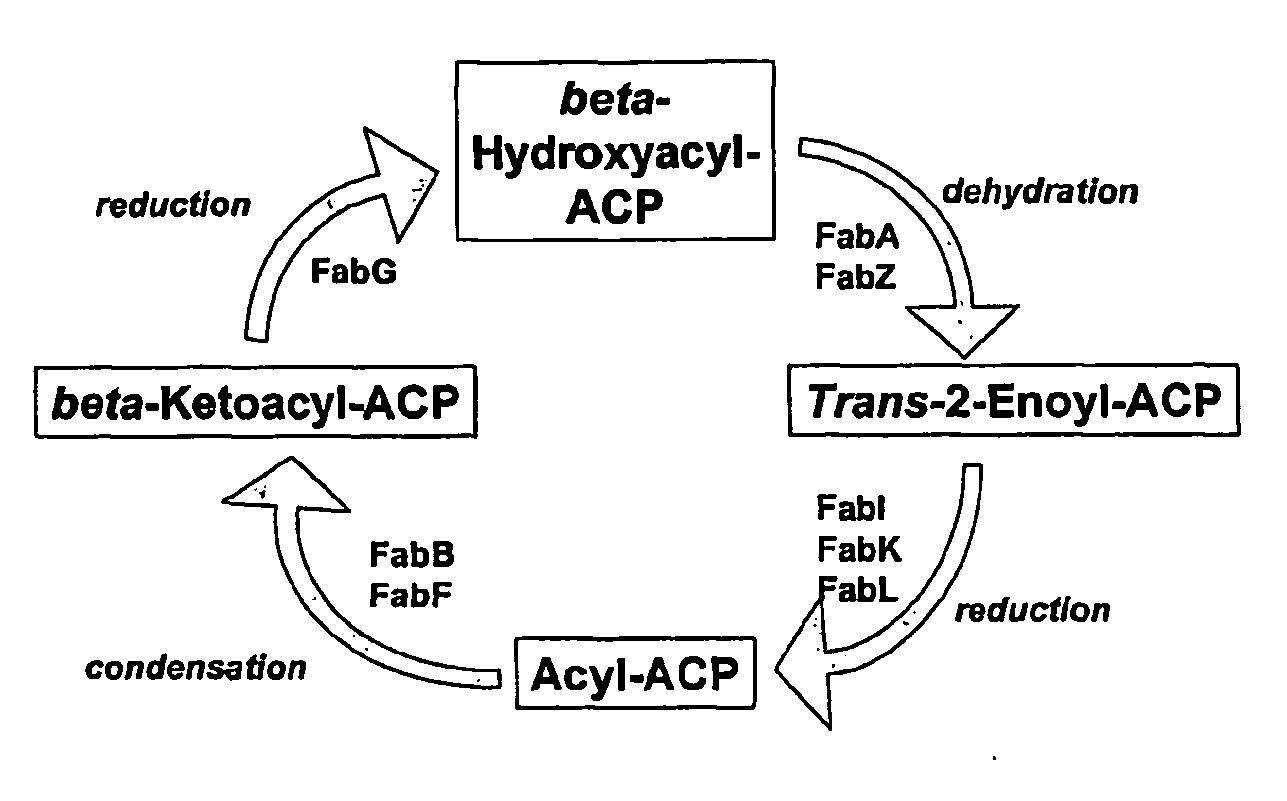Therapeutic agents, and methods of making and using the same
a technology of therapeutic agents and bacterial targets, applied in the field of therapeutic agents, can solve the problems of unmet medical needs and demand for new agents acting against bacterial targets, and achieve the effect of improving the safety and effectiveness of the treatment process
- Summary
- Abstract
- Description
- Claims
- Application Information
AI Technical Summary
Benefits of technology
Problems solved by technology
Method used
Image
Examples
example 1
Preparation of (E)-3-(3,3-Dimethyl-2-oxo-2,3,4,5-tetrahydro-1H-pyrido[2,3-e][1,4]diazepin-7-yl)-N-methyl-N-(2-ethoxy-3-trifluoromethoxybenzyl)acrylamide hydrochloride
[0404]
a) 2-Hydroxy-3-trifluoromethoxybenzaldehyde
[0405]A solution of 2-trifluoromethoxyphenol (5.13 g, 28.8 mmol) in anhydrous acetonitrile (150 mL) in oven-dried glassware was treated with triethylamine (15.0 mL, 108 mmol) and MgCl2 (4.11 g, 43.2 mmol) which had been dried under vacuum with heat. Paraformaldehyde (5.18 g, 172 mmol), which had been dried under vacuum with P2O5, was added and the solution was heated to reflux. After 5 days, the reaction was quenched with 1 N HCl (200 mL) and the mixture was extracted using Et2O (2×100 mL). The combined organics were washed with brine (2×150 mL), dried (Na2SO4) and concentrated to a yellow solid. Purification by column chromatography (silica gel, 98:2 to 95:5 hexanes / EtOAc) gave the title compound (2.45 g, 41%) as a yellow powder: 1H NMR (300 MHz, DMSO-d6) δ 10.24 (s, 1H)...
example 2
Preparation of (E)-3-(3,3-Dimethyl-2-oxo-2,3,4,5-tetrahydro-1H-pyrido[2,3-e][1,4]diazepin-7-yl)-N-methyl-N-(2-propoxy-3-trifluoromethoxybenzyl)acrylamide hydrochloride
[0411]
a) 2-Hydroxy-3-trifluoromethoxybenzaldehyde
[0412]A solution of 2-trifluoromethoxyphenol (5.13 g, 28.8 mmol) in anhydrous acetonitrile (150 mL) in oven-dried glassware was treated with triethylamine (15.0 mL, 108 mmol) and MgCl2 (4.11 g, 43.2 mmol) which had been dried under vacuum with heating. Paraformaldehyde (5.18 g, 172 mmol), which had been dried under vacuum with P2O5, was then added and the solution was heated to reflux. After 5 days, the reaction was quenched with 1 N HCl (200 mL). The mixture was extracted using Et2O (2×100 mL). The combined organics were washed with brine (2×150 mL), dried (Na2SO4) and concentrated to a yellow solid. Purification by column chromatography (silica gel, 98:2 to 95:5 hexanes / EtOAc) gave the title compound (2.45 g, 41%) as a yellow powder: 1H NMR (300 MHz, DMSO-d6) δ 10.24 (...
example 3
Preparation of (E)-N-(3-Chloro-2-ethoxybenzyl)-N-methyl-3-(7-oxo-5,6,7,8-tetrahydro-[1,8]naphthyridin-3-yl)acrylamide
[0418]
a) 3-Chloro-2-isopropoxybenzoic acid isopropyl ester
[0419]2-Iodopropane (1.73 mL, 17.3 mmol) was added to a stirring solution of 3-chloro-2-hydroxybenzoic acid (2.00 g, 11.5 mmol) and K2CO3 (3.52 g, 25.4 mmol) in DMF (25 mL) under N2. After stirring at 70° C. for 18 h, additional 2-iodopropane (1.73 mL, 17.3 mmol) was added. The solution was allowed to stir for an additional 48 h. The reaction was quenched with H2O (70 mL) and the mixture was extracted with Et2O (2×100 mL). The combined organics were washed with brine (100 mL), dried (Na2SO4) and concentrated to yield the title compound (2.29 g, 77%) as a clear oil: 1H NMR (300 MHz, DMSO-d6) δ 7.68 (dd, J=8.1, 1.8 Hz, 1H), 7.58 (dd, J=7.8, 1.8 Hz, 1H), 7.20 (t, J=7.8 Hz, 1H), 5.16-5.50 (m, 1H), 4.39-4.30 (m, 1H), 1.29 (d, J=7.2 Hz, 6H), 1.22 (d, J=6.0 Hz, 6H).
b) (3-Chloro-2-isopropoxyphenyl)methanol
[0420]Diisobu...
PUM
| Property | Measurement | Unit |
|---|---|---|
| pH | aaaaa | aaaaa |
| pharmaceutical composition | aaaaa | aaaaa |
| resistance | aaaaa | aaaaa |
Abstract
Description
Claims
Application Information
 Login to View More
Login to View More - R&D
- Intellectual Property
- Life Sciences
- Materials
- Tech Scout
- Unparalleled Data Quality
- Higher Quality Content
- 60% Fewer Hallucinations
Browse by: Latest US Patents, China's latest patents, Technical Efficacy Thesaurus, Application Domain, Technology Topic, Popular Technical Reports.
© 2025 PatSnap. All rights reserved.Legal|Privacy policy|Modern Slavery Act Transparency Statement|Sitemap|About US| Contact US: help@patsnap.com



